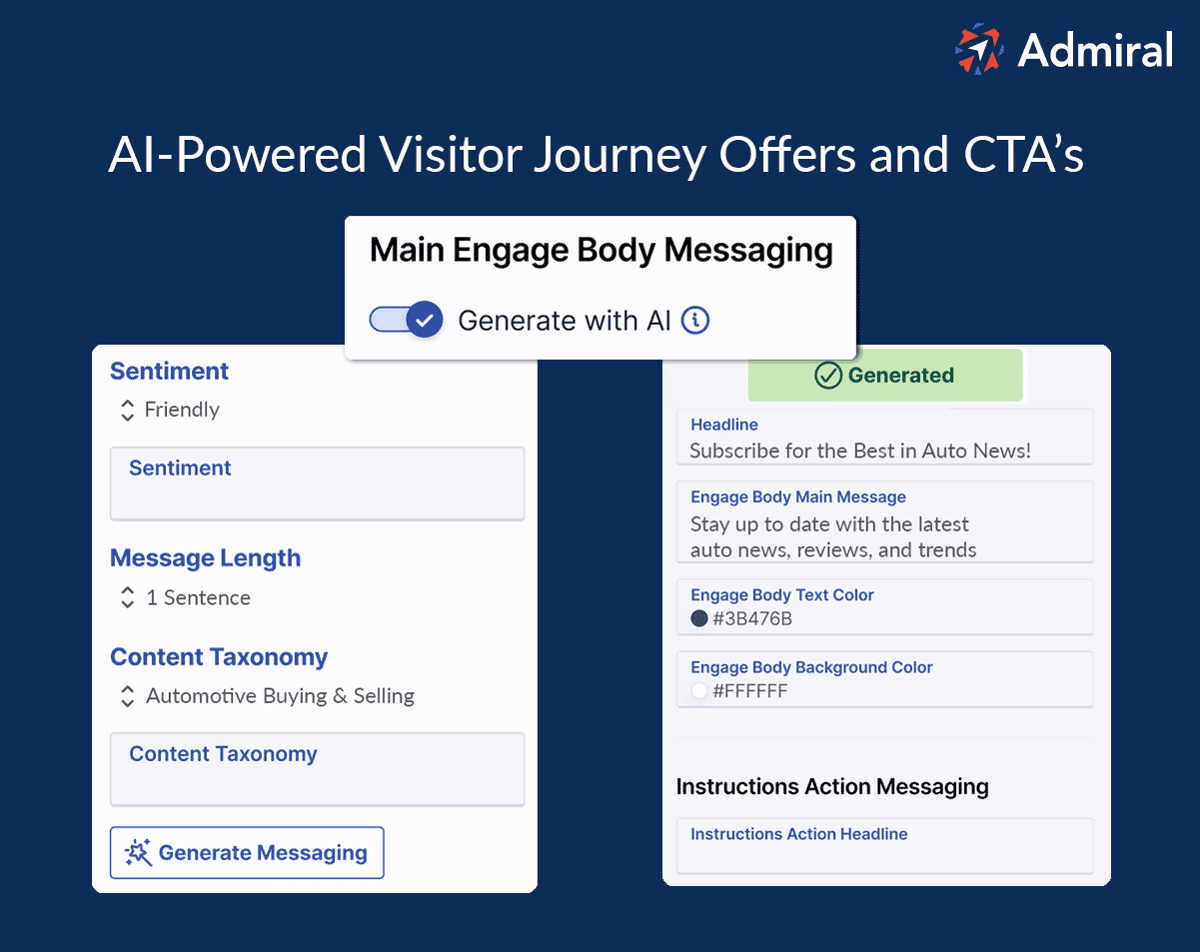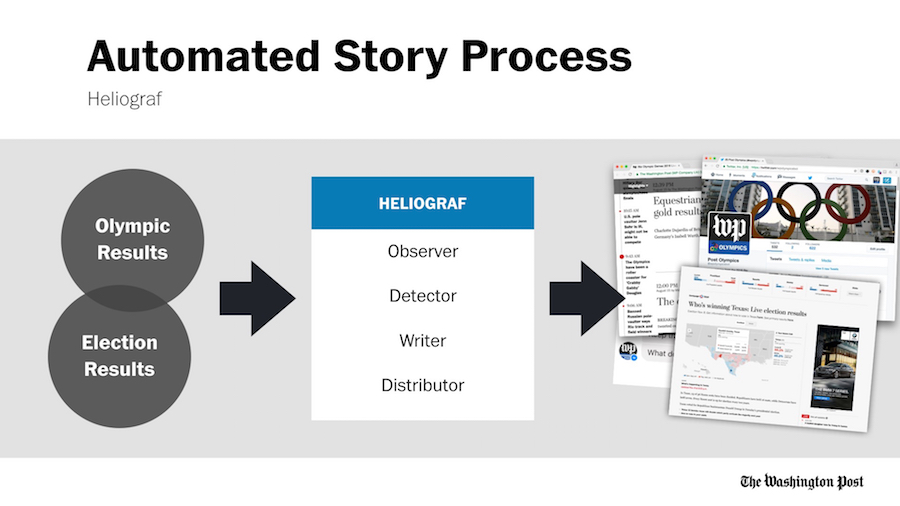If you feel a little overwhelmed by the rise of machine learning and artificial intelligence (AI), rest assured that you’re not alone. However, leaders at major publishers like Bloomberg, Washington Post, Forbes, and Reuters have been investing in AI tools for several years.
ExplodingTopics have recently collated statistics on the growth of AI. The global AI market was valued at $136 billion in 2022, with the U.S. AI market expected to reach $299.64 billion by 2026. Many industries and brands are adopting AI technology to improve their offering to the market, and the online publishing and ad tech spaces are no exception.
AI is an attractive proposition for those looking for a competitive advantage in an already crowded space. Publishers are investing in AI for its ability to improve productivity and efficiency and carry out complex tasks that, until recently, were manual.
The Use Of Artificial Intelligence In Content Production
Producing content for online publications is an ongoing challenge. Commissioning editors often struggle to find writers who produce quality pieces on time and to the brief. Hiring a good writer can also be expensive and time-consuming. Coupled with this, a good writer takes time to craft engaging content. Producing content involves writing and often several hours of research and reading.
As a result, many publishers are looking to AI or machine learning algorithms to supplement their content production strategy, help manage their budgets and support the writers they do hire. Some of the biggest names in the online publishing world have been using AI for some time to help produce content and support their writing staff.
Forbes and Bertie the CMS
 Bertie is the name that Forbes has given to their AI-powered CMS, launched in July 2018. According to their website, “Bertie seeks to empower, rather than supplant the journalist throughout the writing process…”
Bertie is the name that Forbes has given to their AI-powered CMS, launched in July 2018. According to their website, “Bertie seeks to empower, rather than supplant the journalist throughout the writing process…”
Bertie is remarkable in that it learns directly from the writer using it and then customizes its output.
As a result, it can recommend future topics for articles based on what the author previously wrote and can also suggest headlines. Forbes reports they doubled monthly visitors after rolling out Bertie.
It does not currently produce content, leaving that to the human writers. Instead, Bertie acts as a thought starter and helps support writers in their content production efforts.
The Washington Post and Heliograf
Heliograf, an AI-powered storytelling tool, has been in use for several years (it was introduced in 2016). The Washington Post uses the "robot journalist" to generate short articles covering local events. Heliograf wrote over 850 articles in its first year.
It’s been used to cover the Olympics, local sports events and election updates. As a result, the Post has seen its content output significantly increase. While this all sounds impressive (and is), Heliograf’s output primarily summarizes existing content rather than producing anything requiring thought or interpretation.
More recently, the technology was used during the 2020 election to create and insert audio clips of results into the Post’s political podcasts.
NeimanLabs has a good article on the process involved in WaPo AI tools. Here is their summary of the Heliograf:
Bloomberg and Cyborg
Bloomberg Cyborg is a data analysis tool that uses artificial intelligence to analyze large amounts of data. It takes data from breaking financial reports and news, then immediately crafts a news story such as corporate earnings reports. It can also track the performance of companies and identify potential investment opportunities.
It’s estimated that about a third of the content Bloomberg publishes is automated.
It’s estimated that about a third of the content Bloomberg publishes is automated. It’s primarily a tool for those who report on financial institutions and the markets, allowing journalists to collate and interpret large datasets.
Reuters’ Lynx Insight
The Reuters artificial intelligence tool was launched in 2019 along similar lines to Bertie. It helps writers by analyzing data, suggesting story ideas, and writing small snippets of content.
Acting in an assistant role, it aims to support journalists rather than replace them. Lynx analyses large amounts of data to spot patterns and things of interest that make a good story. It can also give company overviews, making it useful for background research.
The real value is using machines to do what they're good at and then presenting that to humans — that's the best of both worlds. Lynx can use metadata to quickly match stories and keywords to available video or image media, to speed production.
Additional Publisher Benefits of AI: 6 Ways AI is Helping Publishers Grow
Many AI Questions for Publishers
While artificial intelligence is increasingly becoming more sophisticated, it still has its drawbacks.
As it currently stands, most AI content still needs human intervention before publishing, but it is getting better fast.
The technology can summarize existing content and analyze large datasets, but if you want to get it to produce anything with personality, it may need help. It’s also not always accurate in its output and does not have a human's moral sensibilities. So any content created by an AI-based system will typically require a human editor before being released into the world.
Then, there is the effect AI output will have on journalists and authors. As things currently stand, AI is not good enough to replace writers, but it will be at some point in the future. There are already indications that some content agencies are turning to AI rather than using junior writers.
"Nobody knows what will happen next!"
Another major consideration is content copyrights. The technology to determine who owns the copyright of AI-generated output has yet to be created. By its very nature, AI draws together text or data from a large pool to produce an output. On the copyright issue, The Verge claims "Nobody knows what will happen next!"
As has been recently seen with the Getty Images lawsuit in the UK against Stability AI, it’s potentially possible for an AI-based system to take copyrighted images and use them to build its own content. If we’re not careful with how we use this technology, it will only be a matter of time before we start seeing similar legal action affecting the online publishing world.
Related: 100+ ChatGPT Prompts for Media Publishers
Generative AI that Drives Revenue™
Since content is such a major component of publishing, it's easy to focus on generative AI for writing, or supplementing stories, but it also can directly drive revenue opportunities. Admiral has integrated ChatGPT AI as part of our visitor relationship platform for media publishers.
Using sentiment selections, content topics, and visitor data, Admiral's AI-powered engagement tool automatically generates copy specifically for visitor CTA's and Offers. The CTA can lead a visitor to a paid subscription, email signup, adblock recovery, or more. Step two of the feature launch will include automated A/B testing, to put the highest converting CTA in front of the right visitors.
Admiral is building machine learning and AI automation into multiple facets of the VRM software. Since last fall, Admiral has rolled out Surge and Popularity Targeting to hundreds of media publishers. The machine-learning feature monitors content for traffic spikes, denoting a breaking or viral story, which then triggers unique CTA campaigns to capitalize on the opportunity.
Learn more about how Visitor Relationship Management (VRM), enhanced with AI, can help you. Schedule a demo to see the full benefit.






